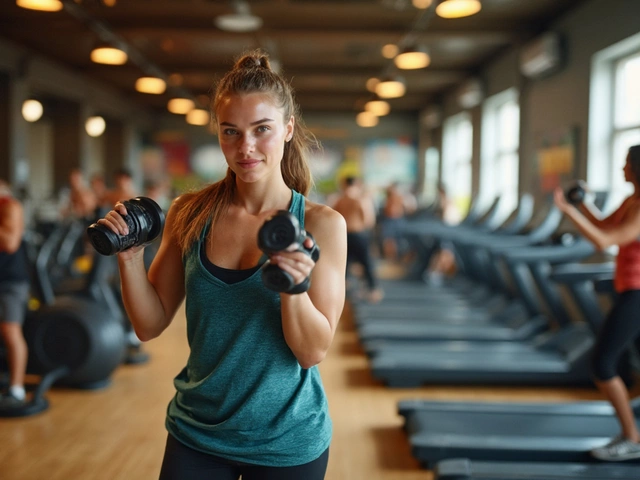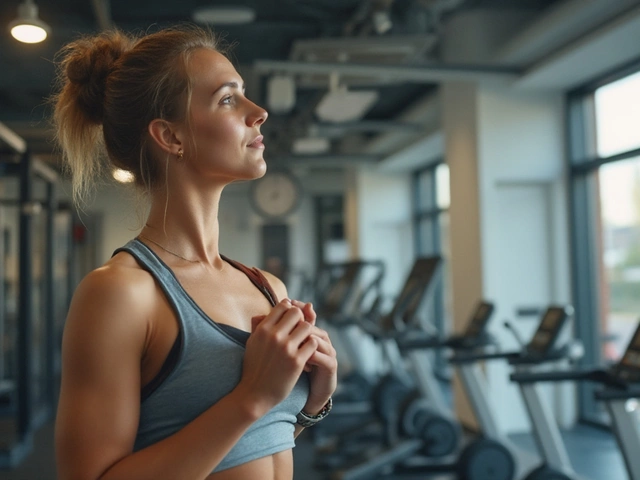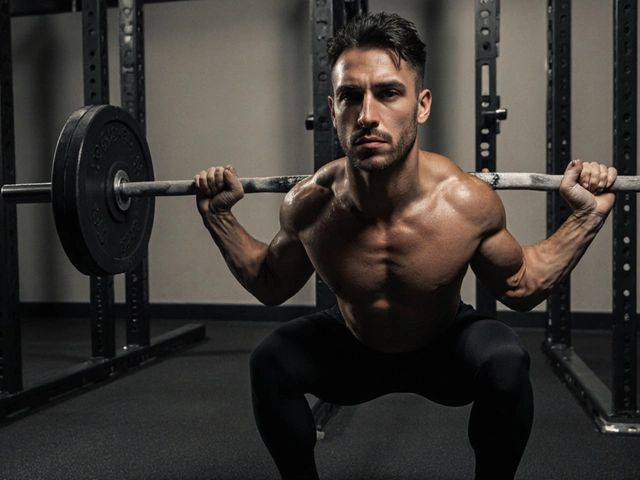The Big 3 Gym Workouts You Need to Know
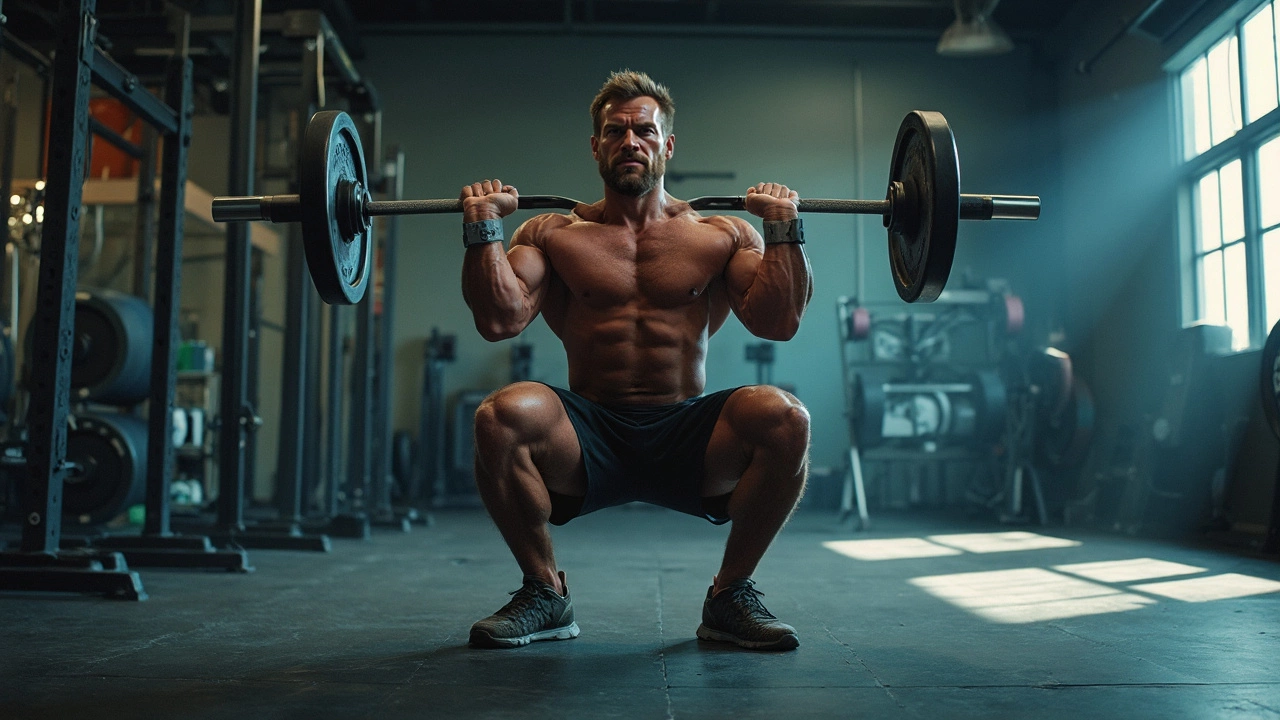
So, you're looking to up your gym game, huh? Well, you can't go wrong with the 'Big 3' exercises. These aren't just any moves; they're the cornerstone of any solid strength training regime. We're talking squats, deadlifts, and bench presses. Get these three down, and you'll see gains like never before.
The beauty of the Big 3 is that they hit multiple muscle groups at once. Squats, for example, are not just about the legs. They're a full-body workout that requires coordination, balance, and strength—from your core to your shoulders. When you're just starting, make sure your form is spot on to avoid the dreaded gym injury. Start with lighter weights, nail the technique, and then pile on those plates. Trust me, Max (my dog) could tell you stories about watching me sweat it out while keeping an eye on my form!
Stick around to learn how these exercises can transform your workouts, boost your strength, and give you the confidence to tackle whatever fitness goals you have set. We'll even throw in some tips on how to seamlessly integrate these power moves into your routine without overloading your schedule. Sound like a plan? Let's break it down, one rep at a time.
- Introducing the Big 3
- The Power of Squats
- Mastering Deadlifts
- Bench Press Basics
- Incorporating the Big 3 into Your Routine
Introducing the Big 3
When it comes to strength training, the Big 3 exercises are the unsung heroes of any gym routine. Ever walked into a gym and seen folks gathered around the squat racks, deadlift platforms, or bench presses? There's a reason for that. These exercises are the gold standard for building up raw power and muscle.
Let’s break it down. Squats primarily work your legs but also engage your core and upper body for balance and stability. Deadlifts, on the other hand, are a full-body exercise that hits everything from your legs up to your traps. And then there's the bench press, the classic chest workout that also pumps up your triceps and shoulders.
The reason these exercises are so essential? They’re known as compound movements, meaning they involve multiple joints and muscle groups at once. This makes them super efficient for total body strength and muscle growth. Instead of isolating one little muscle, you're getting more bang for your buck with each rep.
But why should you bother with the Big 3? Well, they're not only highly effective for muscle and strength gains, but they also improve everyday functionality. Think about it—how often do you find yourself lifting something heavy off the ground or pushing a heavy door open? The strength from these moves translates directly to daily activities.
If you're wondering how effective these exercises can be, studies have shown that incorporating squats, deadlifts, and bench presses into your routine can increase overall muscle mass by up to 30%. Truly game-changing stuff. Whether you're a newbie hoping to sculpt those muscles or a seasoned gym-goer looking to maximize efficiency, the Big 3 are where it’s at.
The Power of Squats
If you're skipping squats, you're missing out on one of the most effective gym workouts ever. Squats are like the Swiss Army knife of exercises—they do it all. When performed correctly, they work your quadriceps, glutes, hamstrings, calves, and even your core. Plus, your back muscles get a good workout too, maintaining stability.
One major reason squats hold a special place in the world of strength training is their ability to boost testosterone and growth hormone levels. These hormones help build muscle and burn fat—talk about a win-win! And don't worry, ladies; this doesn't mean you'll suddenly look like a bodybuilder. Instead, it'll help you tone up and get stronger.
Wondering how to pull off the perfect squat? Keep these tips in mind:
- Stand with feet shoulder-width apart. Keep your chest up and your back straight.
- Bend at the knees and hips like you're sitting back into a chair. Keep your knees in line with your toes.
- Go down as low as you can while maintaining good form. Ideally, aim for thighs parallel to the ground.
- Push through your heels to rise back to standing.
Some folks shy away from squats because they think they're only for serious athletes or powerlifters. But squats can be scaled to fit anyone's routine, from beginners to advanced gym-goers. They also come in many flavors: goblet squats, split squats, and front squats, to name a few. Each variation has unique benefits and challenges, so mix it up!
And here's a tidbit that might surprise you: Research suggests that including squats in your routine twice a week can significantly improve your lower body strength within just 12 weeks. So, if you're after those leg gains, squats are your best friend.
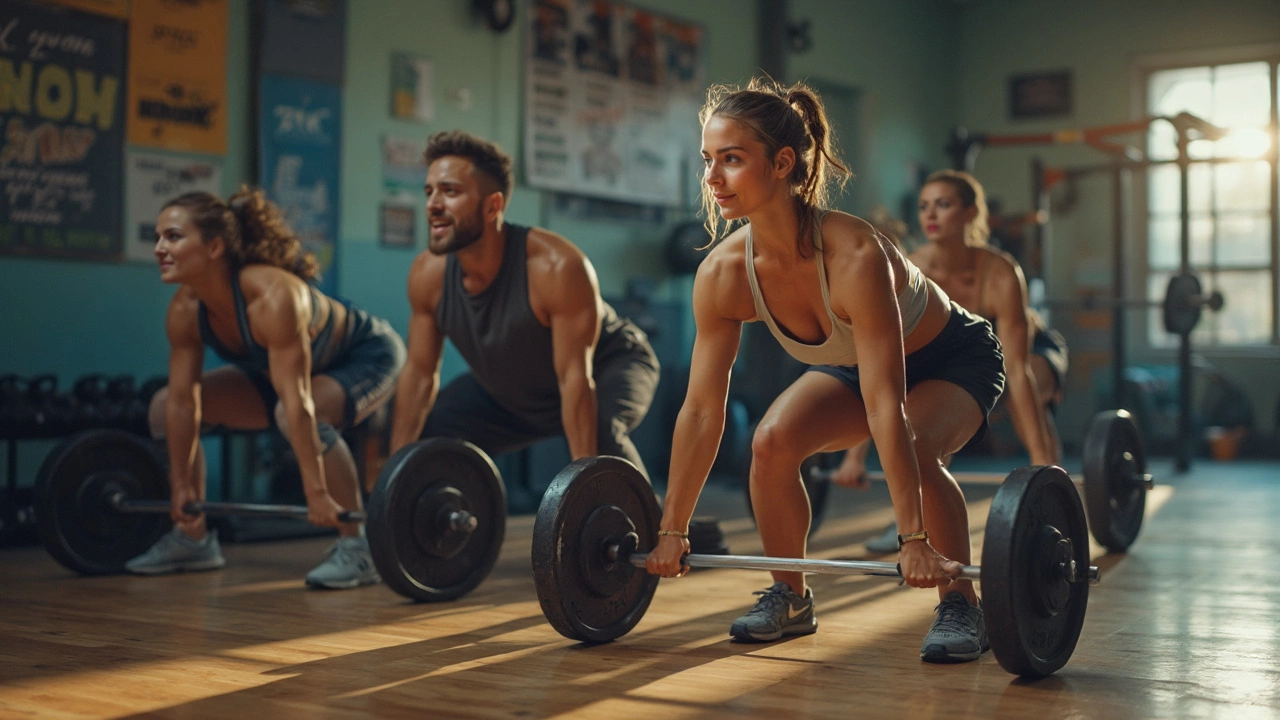
Mastering Deadlifts
Getting good at deadlifts is like hitting the gym jackpot. They're not called one of the 'Big 3' gym workouts for nothing. Deadlifts are the ultimate full-body exercise that pumps up your legs, back, and grips all in one go. But all this goodness comes with a twist—the right form is key.
First up, let's talk setup. Keep your feet about hip-width apart, and make sure the barbell is over the middle of your feet. You're going to want a solid grip, so wrap those fingers tight around the bar. Drop your hips a bit and keep your chest up. Your back should stay flat. No hunching, unless you want to befriend a chiropractor for life!
When you're lifting, focus on driving through your heels. The movement should be smooth, and your knees and hips should extend at the same rate. Bring the bar close to your body, and as you stand up, thrust those hips forward. When lowering it back, think of it like hitting rewind—using the same path to put the bar down.
Avoid some rookie mistakes like letting the bar drift away from your legs, or rounding your back. Both can turn your deadlift session into a pain management seminar.
Check out this table on some stats showing deadlift engagement:
| Muscle | Activation Level (%) |
|---|---|
| Glutes | 90% |
| Hamstrings | 80% |
| Low Back | 70% |
By now, it's clear why deadlifts are a favorite. They pump up your strength, improve posture, and can even give you a metabolism boost. Include deadlifts in your routine and aim to nail that perfect form before adding more weight.
Bench Press Basics
The bench press is often the go-to exercise for anyone looking to build upper body strength. It's not just about showing off your ability to push some serious weight; it's a crucial part of the big 3 exercises for building your chest, shoulders, and triceps.
When you're lying on that bench, safety is key—seriously, nobody wants a barbell crashing down on them. Always have a spotter when you go heavy. Here’s the deal on how to nail it:
- Get the Setup Right: Lie down with your eyes directly under the bar. Plant your feet firmly on the ground, shoulder-width apart.
- Grip and Unrack: Grab the bar slightly wider than shoulder-width. Keep your wrists straight. Unrack the bar, arms locked.
- Lower with Control: Bring the bar down to your mid-chest, elbows at a 45-degree angle. Keep the motion slow and steady.
- Press and Repeat: Push the bar back up, breathing out as you extend your arms. That’s one rep!
A study by the American Council on Exercise found that the bench press is one of the most effective moves for chest muscle activation.
“The bench press remains unparalleled for developing a strong, defined chest,” says strength coach Mark Rippetoe.
Here's a quick tip: Mix up your grip width to activate different parts of your pecs and triceps. Regular variation helps target more muscle fibers and boosts overall development.
Feeling competitive? A lot of folks want to know what kind of weight is considered strong. Though it varies by weight class, a common goal is benching 1.5 times your body weight. Just remember, quality form beats raw numbers every time.
Track your progress in a table, noting the date, weight lifted, and number of reps performed. Set goals and watch those numbers grow:
| Date | Weight (lbs) | Reps |
|---|---|---|
| 04/01/2025 | 135 | 5 |
| 04/15/2025 | 145 | 5 |
Stay consistent, respect the process, and soon enough, your bench press will be a serious contender in your strength training toolkit. Remember, patience and persistence pay off!
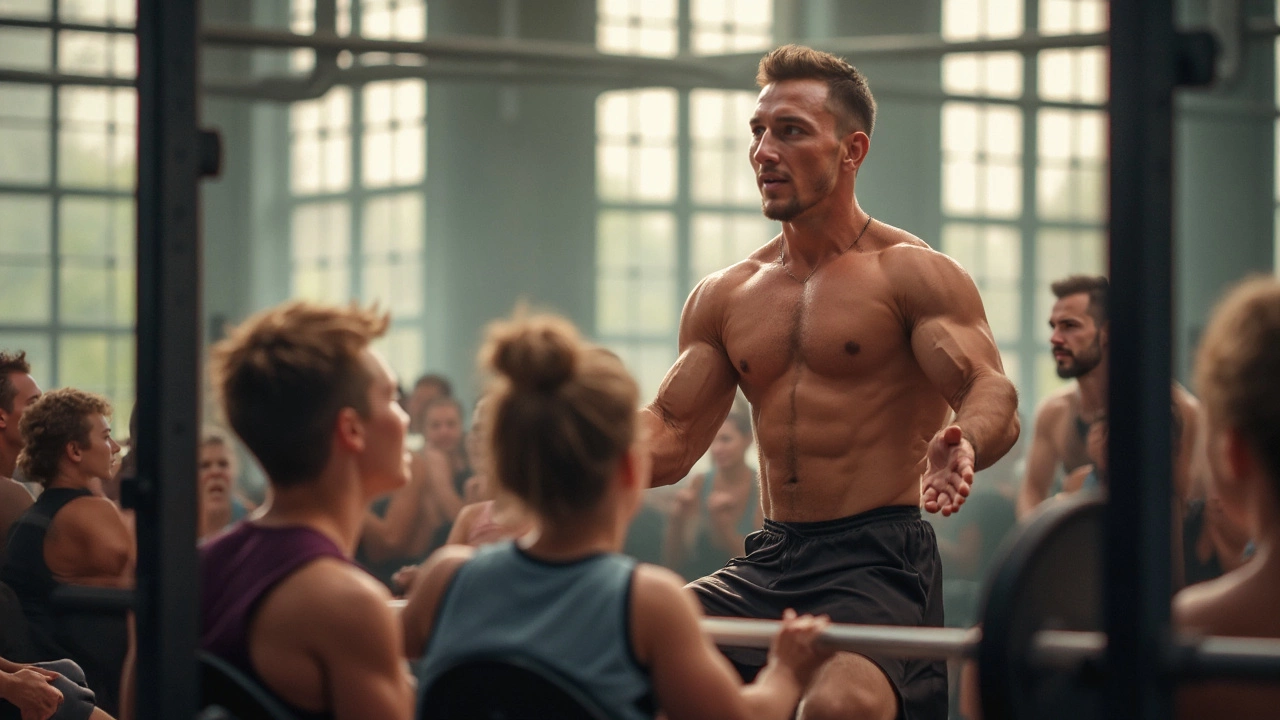
Incorporating the Big 3 into Your Routine
Adding the big 3 gym workouts—squats, deadlifts, and bench presses—into your routine might seem daunting, but it's all about strategy and consistency. The goal here is to make these exercises work for you, not against you. Here's how you can make them a staple in your fitness journey.
First, consider how often you hit the gym. For most folks, aiming for three to four sessions a week is a sweet spot. This way, you can dedicate each day to focusing on one of the Big 3, allowing for proper rest and recovery. Here's a basic split:
- Day 1 - Squats: Focus on leg day with squats as the centerpiece. Incorporate lunges and leg presses to complement them.
- Day 2 - Bench Press: Work on your upper body with bench presses, adding in push-ups and dumbbell flyes.
- Day 3 - Deadlifts: Back and core day with deadlifts leading the charge. Add some pull-ups and planks to strengthen the support muscles.
- Day 4 (optional): Mix it up with cardio or flexibility training to balance strength and endurance.
Remember, form is everything. Prioritize technique over weight. As you progress, gradually increase the load. This not only prevents injuries but also ensures you're actually building strength.
Don't forget to factor in rest days. They're crucial for muscle recovery, particularly when you're lifting heavy. Plus, make sure you're eating right. Fuel those workouts with a balanced diet rich in protein, carbs, and healthy fats.
Lastly, track your progress. It's motivating to see how far you've come. Whether it's jotting down the weights you lift or how you feel after each session, keeping tabs will keep you on the path to smashing those fitness goals.
The Big 3 might sound simple, but their power lies in their compound nature, engaging multiple muscles simultaneously. As you integrate them into your regimen, you'll not only build strength but also improve your overall gym performance.

